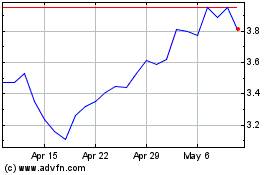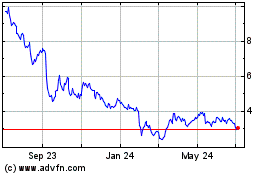Hispanics Will Account for More Than 40 Percent of the Increase in U.S. Employment in the Next Five Years, IHS Study Says
February 24 2015 - 9:00AM
Business Wire
Share of job growth will rise to more than 75 percent from 2020
to 2034
The Hispanic population will play an increasingly significant
role in future U.S. employment growth, accounting for more than 40
percent of growth in the next five years and more than 75 percent
between 2020 and 2034 – an increase of 11 million jobs out of an
economy-wide gain of 14 million –according to a new study from IHS
Inc. (NYSE: IHS), a leading global source of critical information
and insight.
The IHS study, Hispanic Immigration and U.S. Economic Growth,
projects that Hispanic employment growth will average 2.6 percent
per year over the next 20 years. At the same time, growth of the
non-Hispanic working age population will slow to near zero, and new
non-Hispanic entrants to the labor force will barely offset
retiring Baby Boomers. As a result, the Hispanic share of total
U.S. employment will rise from 16 percent in 2014 to 23 percent in
2034.
Other key findings include:
- Immigration will play a key role in
future U.S. employment growth. By 2020, labor force growth is
expected to slow to the point that the annual change in the labor
force is roughly equal to the amount of net migration.
- Despite a generally positive long-term
economic outlook for Latin American countries, the U.N. projects
continuing net outmigration from the 10 Latin American countries
and Puerto Rico that are the primary countries of origin of the
foreign-born U.S. Hispanic population.
- According to U.S. Census Bureau
assumptions about future Hispanic net international migration, the
number of foreign born Hispanics will grow from 22 million in 2014
to over 29 million in 2034, and the foreign-born share of the
Hispanic population will fall slowly over this period – from 39.7%
to 34.8%.
- The number of Hispanics that speak
Spanish in the home will rise from 36.9 million in 2014 to 55.4
million in 2034.
- Higher levels of immigration are
conducive to stronger U.S. economic growth, and there are credible
scenarios for higher levels of Hispanic immigration than assumed in
the study’s baseline forecast.
“The Hispanic population is a younger and faster growing segment
of the population, while trends in the non-Hispanic population are
heavily influenced by the aging baby-boomer generation that is
moving into retirement,” said James Gillula, IHS economist and the
study’s lead author. “The Hispanic population will play an
increasingly significant role in future U.S. employment
growth.”
Hispanic Immigration and U.S. Economic Growth was commissioned
by Univision Communications, Inc. IHS offers an independent
assessment and is exclusively responsible for all of the analysis,
content, and conclusions contained in the study.
About IHS
(www.ihs.com)
IHS (NYSE: IHS) is the leading source of insight, analytics and
expertise in critical areas that shape today’s business landscape.
Businesses and governments in more than 150 countries around the
globe rely on the comprehensive content, expert independent
analysis and flexible delivery methods of IHS to make high-impact
decisions and develop strategies with speed and confidence. IHS has
been in business since 1959 and became a publicly traded company on
the New York Stock Exchange in 2005. Headquartered in Englewood,
Colorado, USA, IHS is committed to sustainable, profitable growth
and employs about 8,800 people in 32 countries around the
world.
IHS is a registered trademark of IHS Inc. All other company and
product names may be trademarks of their respective owners. © 2015
IHS Inc. All rights reserved.
IHS Inc.Kate Smith, +1
781-301-9311kate.smith@ihs.comorPress Team, +1
303-305-8021press@ihs.com
IHS (NYSE:IHS)
Historical Stock Chart
From Mar 2024 to Apr 2024

IHS (NYSE:IHS)
Historical Stock Chart
From Apr 2023 to Apr 2024
